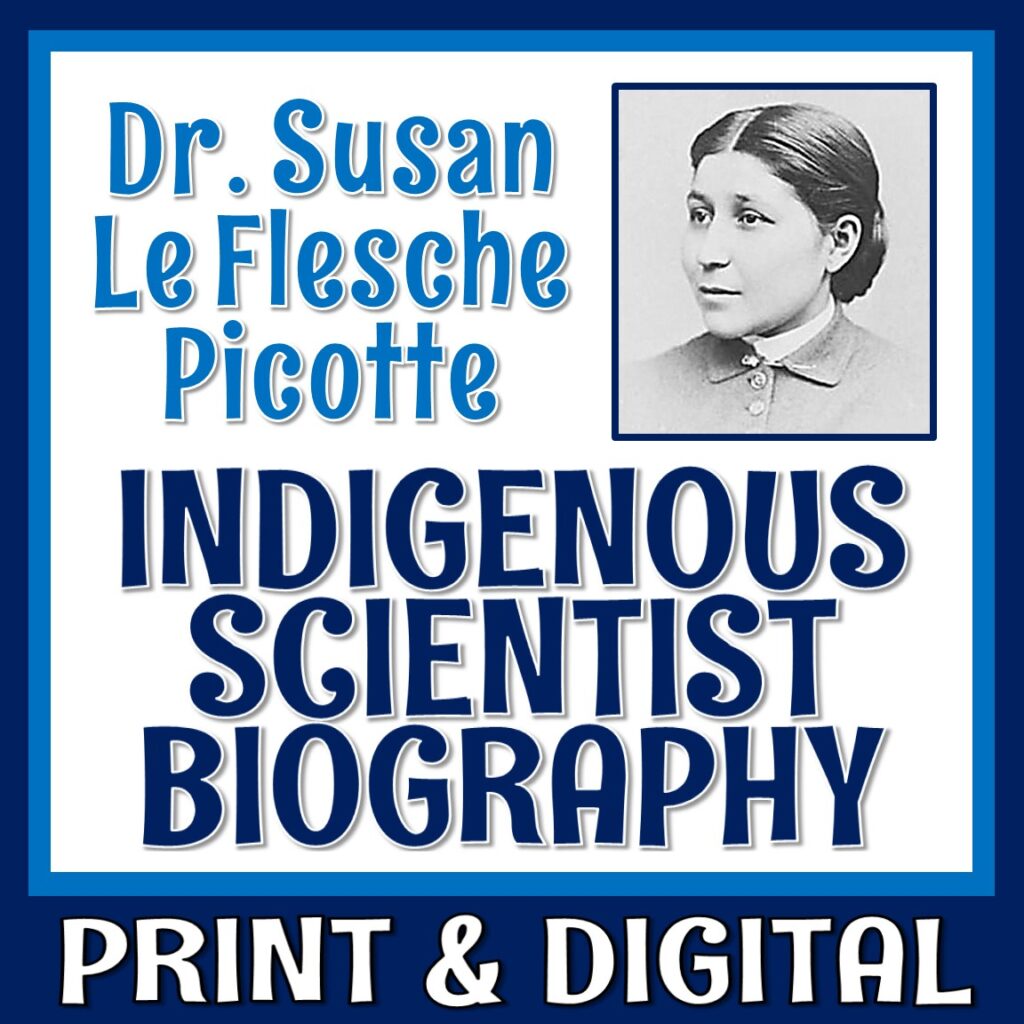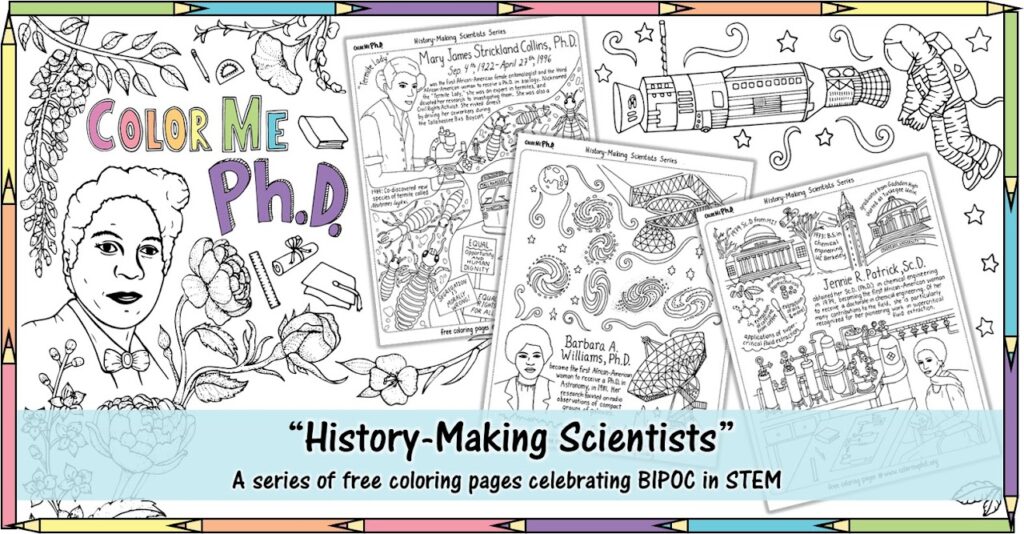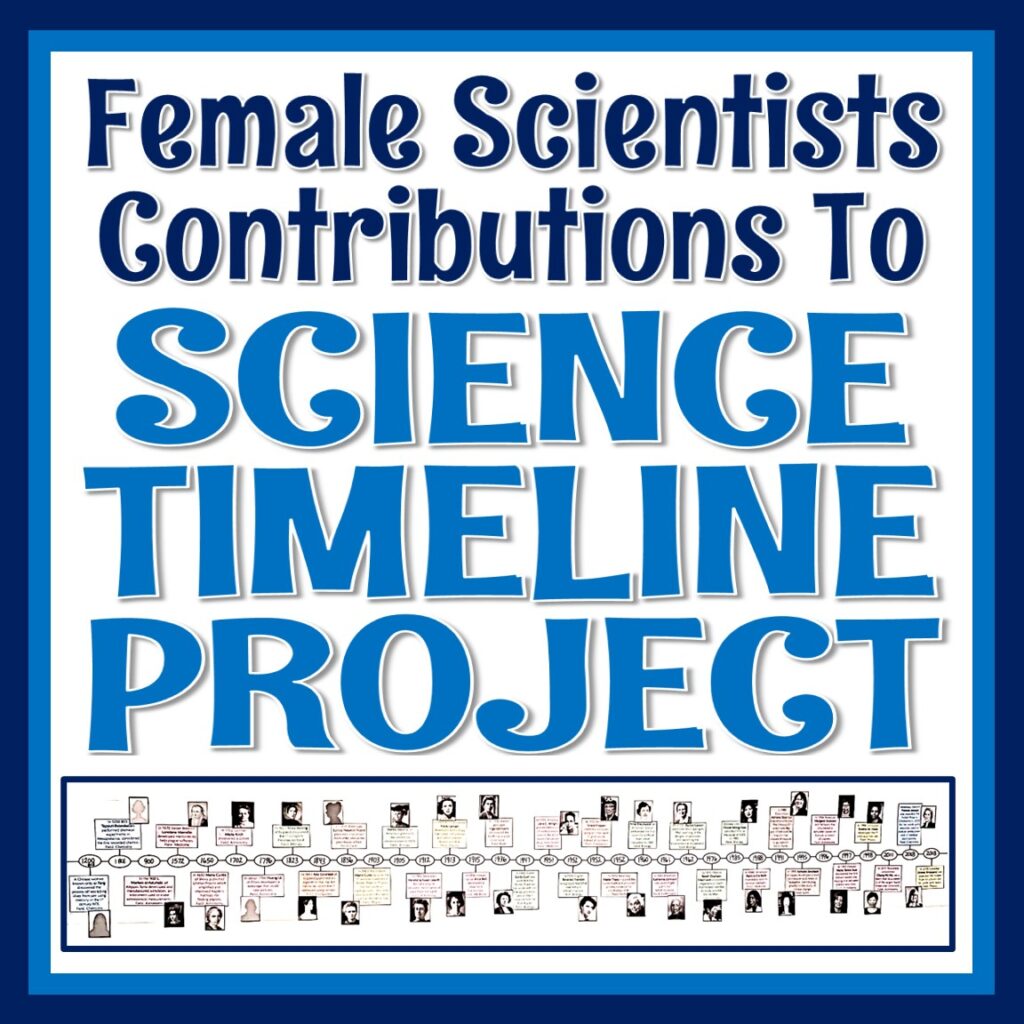
What Does a Scientist Look Like Activity
One of my biggest passions as a science educator is to ensure that my students see themselves represented in the scientists I highlight in my classroom. After a “What does a scientist look like?” activity, kids should know that the answer is THEM! They look like a scientist!
February is Black History Month, and Hispanic Heritage Month runs from September 15 to October 15. November is Native American Heritage Month, and in May, our country honors Asian Pacific American Heritage Month.
I get that we’re busy teaching curriculum and trying to fit it all in. I get that these months make convenient times to make a bulletin board or do a lesson about a particular group of scientists.
But covering diverse scientists shouldn’t start or end in a “special month”!
Teaching about diverse scientists should be interweaved into teaching science itself.

Einstein Is Overrated
Let’s start with this mic drop.
Really, it’s not so much that Einstein is overrated; it’s just that when kids think of a scientist, he’s usually the only one that comes to mind. All that bugs me.
Kids need to see more in a scientist than an old dude with crazy hair and a lab coat. They need to see all types of people, young and old, men and women, in lab coats or plain clothes, from every background.
And they need to see more than just the same faces over and over again.
I mean, Mae Jemison made incredible strides. She’s simply amazing, and every student should absolutely know her story. But have kids ever heard of Dr. Jane Wright? Um, no. But she pioneered chemotherapy!
And many kids learn about George Washington Carver in elementary school. But have they ever heard of Lewis Latimer? Probably not. But the man was instrumental in Edison developing the light bulb! (He also invented the precursor to air conditioning. Thank you, sir.)
And what about Bisi Ezerioha? He’s an engineer who is so passionate about racecar driving that he started his own company and invented a 1000+ horsepower motor. How cool of a scientist is that?!



It’s up to us to widen students’ views of who a scientist is. It’s up to us to introduce them to lots and lots of scientists, not just the ones they always see.
I repeat: They need to see themselves. And they need to see more than the “usuals.” There’s a lot of really important work that’s been done by people who aren’t household names and who don’t look like Einstein.

Dr. Jane Wright Biography
Let’s talk more about Dr. Jane Wright. When she started her cancer research, doctors thought that any cancer treatment other than surgery or radiation was a waste of time. So, if you, as I do, know anyone who has ever fought cancer or taken medications for arthritis or psoriasis, we have Dr. Wright to thank for her work.
It’s stunning to me that this scientist, whose impact is so incredibly far-reaching, is not a household name. I mean, whose work are we all more personally impacted by, Dr. Wright or Einstein?
I feel a responsibility to make sure my students know what Dr. Jane Wright’s work has done for all of us.
I’ve created a text about Dr. Jane Wright that can be used in any secondary classroom, as well as a corresponding worksheet. You can download the FREE document here. I hope you share her story with your students. She’s not Einstein, and that’s the point!
So Many More Like Her!
Kids need to know that there are a lot of scientists just like Dr. Wright – people who have made incredible contributions to science but remain largely unknown.
For example, have you heard of Dr. Susan La Flesche Picotte? A member of the Omaha tribe, she was the first Indigenous American woman to earn a medical degree.

And do you know the story of Olga D. González-Sanabria? She is a Puerto Rican inventor and chemical engineer. She’s the highest-ranking Hispanic at NASA! She led the team that developed the innovative batteries in the International Space Station.

How about Vivien Thomas? His story is remarkable. The grandson of enslaved people, he developed a surgical procedure for curing blue baby syndrome – a procedure that saves babies’ lives to this day.

Bring these scientists to life by having students read a biography and then answer questions on a worksheet. I offer many in the Representation in Science section of my store!
(P.S. I offer a huge bundle of 16 scientist biographies that make awesome sub plans!)

“What Does a Scientist Look Like?” Activities
Beyond reading biographies, there’s many things you can do to introduce students to diverse scientists.
Free coloring pages from www.ColorMePhD.org: This is an amazing resource for scientist coloring activities. They aren’t just simply coloring pages, however. Each sheet has a nice write-up about the scientist they feature. These are great for fast finishers or for when you have an extra few minutes at the end of a class.

WebQuests: Students use the internet to find out more about diverse scientists. This is a nice activity because even though students are searching for specific things that you’ve asked for (dates, accomplishments, etc.), they end up learning a lot more. As students read different websites, they find random, interesting details about the scientists, what they’ve overcome, and tidbits about who they were as people. Different students pick up on different aspects of the scientists, making connections that personalize the scientists. Bonus: Webquests make great sub plans!

Timelines: Creating a timeline is an excellent way to give kids an overview of the achievements in science of particular groups. Each entry teaches them a little bit about each individual scientist, and the fully assembled timeline gives an appreciation for the enormity of the contributions of the scientists as a group.
Scientists in the News: Keep your eye out for science news videos and articles, specifically when a scientist is interviewed. Take a few moments at the end or the beginning of class to show the news to your students. Talk about the science news itself, but also have a class discussion about the scientist. Talk about the importance of the work the scientist is doing, where the scientist works (A lab? A research vessel? The forest?), what type of educational background the scientist might have, etc.
If you’re looking for science news, a great place to find articles is www.SNExplores.org. And when you see a news piece on television, it’s easy to search YouTube to find a clip on the same story.
🚫 One Thing I Won’t Do Again (Soon, anyway!)
I realize there’s a lot of advice out there to “bring in the community” and guest speakers to help expose kids to different scientists. Maybe this works for some people, but I haven’t had good luck.
As teachers, we take for granted how well we can speak to kids, how well we can break concepts down, and how we can keep kids engaged. People in other careers often can’t do this so well, even if they have the best intentions. Three separate times, I’ve invited guest speakers into my school. Three separate times, it was kind of a hot mess!
Well, That Didn’t Go As Planned…
One biologist who runs a local biotech company spoke in so much detail about the science that it was above my head. Way above. And when the kids asked her really cool, genuinely interesting questions, she kept dryly repeating, “that’s proprietary.” The worst part? She said her job was boring. Seriously? It was cringey, as the kids say.
Another was a college chemistry professor. He told me he would do interesting demos for the kids. He did one. And it wasn’t that great. And he spoke in monotone the entire rest of the period.
Another was a physicist who demonstrated gravity by falling to the floor. That’s it. That was his entire shtick. He thought the kids would burst out laughing and he would be an instant teaching superstar. But they just looked at him. He seemed stunned and offended that they didn’t think he was the most creative teacher ever, and he actually threw some shade at them. The nerve!
Keep in mind I had great conversations with these people beforehand. I had every reason to think it would go swimmingly well. But when it came time to present, these guest scientists made scientists and science seem, well, not that cool.
From these experiences, I’ve learned that teachers know kids. We know what works. We know, for the most part, what will hook their attention and get them excited. And we know we can’t talk at them for very long. Other professionals just might not have that “je ne sais quoi” that experienced science teachers do. When you invite in a non-teacher, keep in mind that they are just that – a non-teacher.
✔️A Better Way to Have Scientist Guests
If you are inviting a scientist to speak in your classroom, here’s my advice:
- Be crystal clear with the person about what you are looking for. Is it a cool demo? It is how they became a scientist? Is it the coolest parts of their job? Help them know what to focus on.
- Make sure that you know exactly what they will say and do beforehand. Ask to see the slides, if there are any.
- Pick someone who puts a positive, upbeat, and energetic spin on their work.
- Ask if they’ve ever spoken to a classroom before. (And maybe how it went!)
- Limit their time to 15 minutes. This is plenty of time to pique kids’ interest without dragging it out.
In my opinion, the best way to bring the science community into your classroom is to invite local conservation groups to come into your classroom. The free website EnvironmentalGroups.us has an awesome clickable map of the U.S. that pulls up environmental groups by state.
Find one near you to learn more about what classroom resources they have. In my experience, groups like this are excited and prepared to share their work with students! And because they do it often, they’re pretty good at it. Added bonus: Many of them have programs that tie into specific state standards.
LET’S CONNECT!
If you like these ideas, please follow me on Instagram where I offer science teacher tricks and tips! And you can follow me on Teachers Pay Teachers, too!
Share it:
- Read more about: Representation in Science







